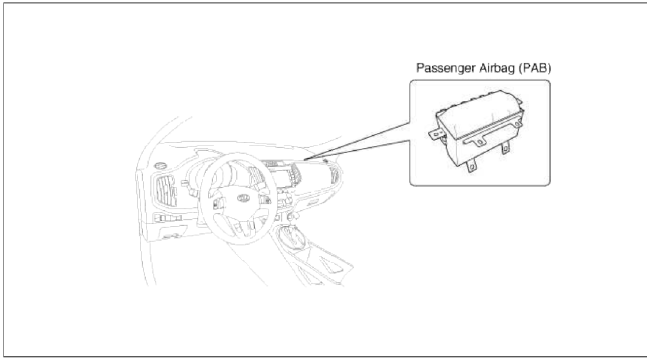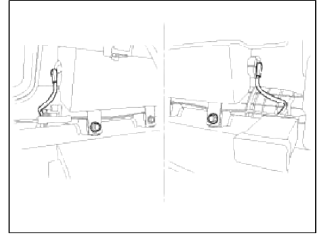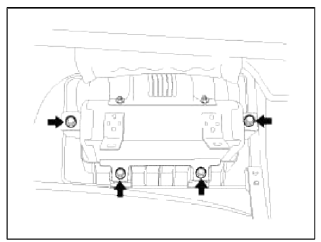Kia Sportage: Passenger Airbag (PAB) Module
Description and Operation
Description
The passenger airbag (PAB) is installed inside the crash pad and protects the front passenger in the event of a frontal crash. The SRS CM determines if and when to deploy the PAB.
CAUTION
Never attempt to measure the circuit resistance of the air bag module (squib) even if you are using the specified tester. If the circuit resistance is measured with a tester, accidental airbag deployment will result in serious personal injury.
Components and Components Location
Components

Repair procedures
Removal
1. Disconnect the battery negative cable and wait for at least three minutes before beginning work.
2. Remove the crash pad garnish. (Refer to the Body group - crash pad).
3. Disconnect the passenger airbag connector and remove the PAB mounting bolt.

4. Remove the crash pad. (Refer to the Body group - crash pad).
NOTE
Replace the crash pad which is damaged while PAB is deployed.
5. Remove the heater duct from the crash pad.
6. Remove the mounting nuts (4EA) from the crash pad. Then remove the passenger airbag.
CAUTION
The removed airbag module should be stored in a clean, dry place with the airbag cushion up.
Installation
1. Remove the ignition key from the vehicle.
2. Disconnect the battery negative cable from battery and wait for at least thee minutes before beginning work.
3. Place a passenger airbag on the crash pad and tighten the passenger airbag mounting bolts.
Tightening torque: 5.9 ~ 6.9 N.m (0.6 ~ 0.7 kgf.m, 4.3 ~ 5.1 lb-ft)

4. Install the heater duct to the crash pad.
5. Install the crash pad. (Refer to the Body group- crash pad)
6. Tighten the passenger airbag mounting bolt
Tightening torque: 18.6 ~ 26.5 N.m (1.9 ~ 2.7 kgf.m, 13.7 ~ 19.2 lb-ft)
7. Connect the passenger airbag harness connector to the SRS main harness connector.
8. Reinstall the crash pad garnish. (Refer to the Body group - crash pad)
9. Reconnect the battery negative cable.
10. After installing the passenger airbag (PAB), confirm proper system operation:
- Turn the ignition switch ON; the SRS indicator light should be turned on for about six seconds and then go off.
READ NEXT:
 Side Airbag (SAB) Module | Curtain Airbag (CAB) Module
Side Airbag (SAB) Module | Curtain Airbag (CAB) Module
Description and Operation
Description
The Side Airbags (SAB) are installed inside the front seat and protects the driver and passenger from danger when side crash occurs. The SRSCM determines
 Airbag Module Disposal
Airbag Module Disposal
Description and Operation
Airbag Disposal
Special Tool Required
Deployment tool 0957A-34100A
Before scrapping any airbags or side airbags (including those in a whole
vehicle to be scrapped
SEE MORE:
 Components and Components Location | Description and Operation
Components and Components Location | Description and Operation
Components
HECU module
Front wheel speed sensor
Rear wheel speed sensor
Yaw rate & Lateral & Longitudinal G sensor
Steering angle sensor
ABS Warning lamp
Parking brake EBD warning lamp
ESC OFF lamp
ESC Function/Warning lamp
DBC war
 Vehicle Identification Number (VIN)
Vehicle Identification Number (VIN)
The Vehicle Identification Number (VIN)
is the number used in registering your
vehicle and in all legal matters pertaining
to its ownership, etc.
VIN cover (if equipped)
The number is punched on the floor
under the front right side seat. To check
the number, open the cover.
VIN label
Content
- Home
- Kia Sportage - Fifth generation (NQ5) - (2022-2026) - Owner's Manual
- Kia Sportage - Second generation (JEKM) (2005-2015) - Body Workshop Manual
- Kia Sportage Third generation (SL) - (2011-2016) - Service and Repair Manual
- Sitemap
- Top articles